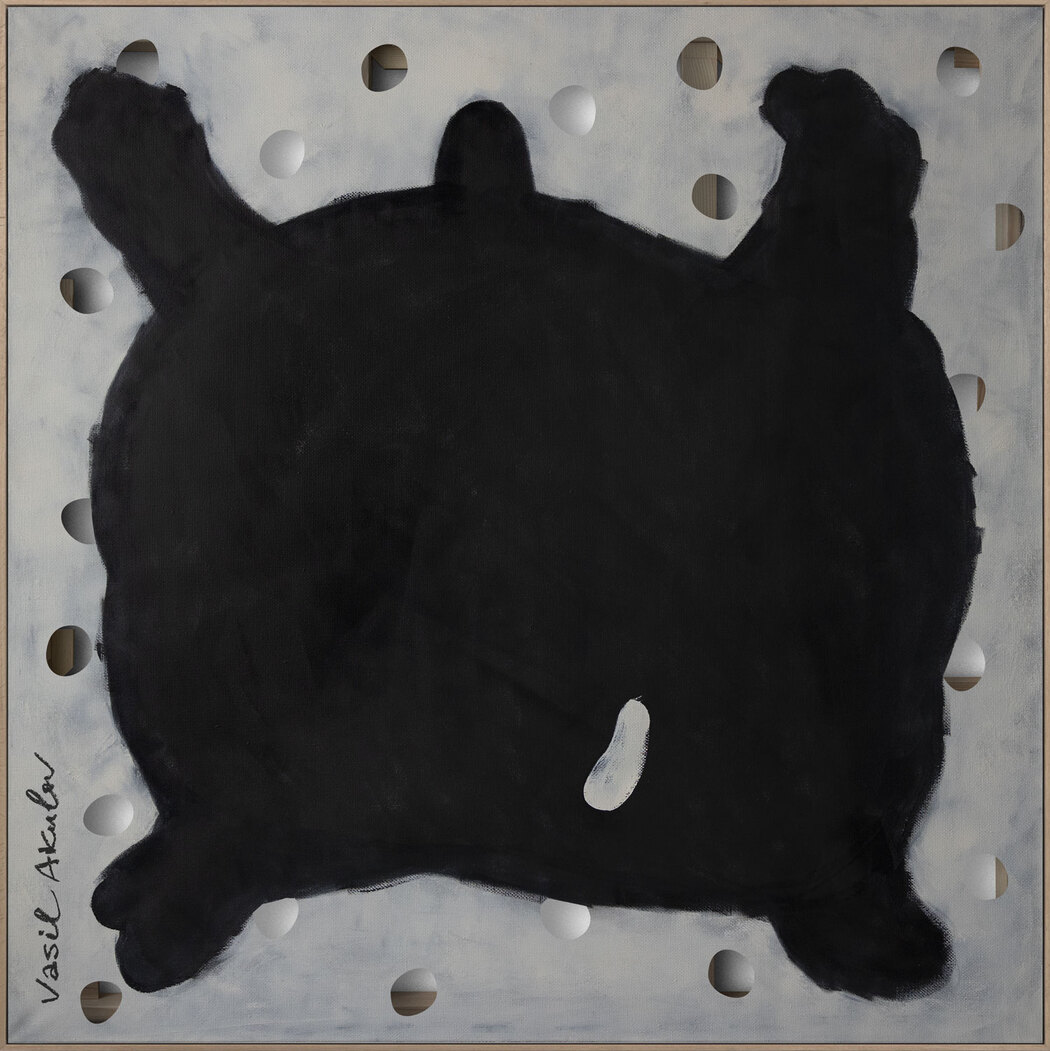Vasil Akulov
Year of birth: 1980
Location: London/Moscow
Education: British Higher School of Design, Udmurt State University
Three words to describe your art: Memory. Absence. Restoration.
Discipline: Contemporary art, bioart
Website | Instagram

Can you tell us more about the inspiration behind your “Red Book. Animals” project and how you selected the animals to feature?
This project is my personal response to the sixth mass extinction currently unfolding due to human activity. I approached the Red Book as a cold, documentary record of our blindness—devoid of emotion or pain, just lists of disappearing creatures.
I chose animals that have become symbols of the ecological crisis: the blue whale (a giant we’ve still managed to push to the brink), the polar bear (a living barometer of climate collapse), Grevy’s zebra (whose habitat we’ve turned into grazing land). But what matters most is what I cut out—the absence of their offspring. This isn’t just empty space; it’s a question: Whose silhouettes will vanish next?
Your work frequently explores the relationship between humans and nature. How do you see your art as a reflection of humanity’s role in ecological responsibility?
I don’t believe in art as a sermon. My works aren’t accusations—they’re mirrors. When a viewer sees a canvas with the silhouette of a bear cub cut out, they instinctively try to “complete” the image—only to confront impossibility. That’s the moment when extinction statistics become personal.
In Red Book, I deliberately avoid bloody scenes or shocking imagery. Emptiness is more powerful—it forces people to realize what we’ve already lost without noticing.
 Vasil Akulov | Golden Eagle | 2024
Vasil Akulov | Golden Eagle | 2024
The technique of cutting out silhouettes of animals is a powerful metaphor. What significance does this method hold for you, and how do you believe it impacts the viewer’s understanding of extinction?
Cutting is a physical act of destruction, one I perform as an artist. The knife becomes a metaphor for human intervention—we are literally carving species out of ecosystems.
But what remains—the hole in the canvas—is what truly matters. It:
– Changes under different lighting (like our fading memory of lost species)
– Lets you see through the work (as if peering into an empty future)
– Makes the viewer complicit—they involuntarily try to “fill” the void with their gaze
This isn’t a metaphor for disappearance—it’s a direct demonstration of it.
Your work has a monochromatic palette, which is quite different from the psychedelic colors used by Andy Warhol in his endangered species series. Why did you choose this more somber color scheme, and what effect do you hope it has on the viewer?
Warhol turned endangered animals into pop icons. I see them as ghosts.
Black and white:
– References scientific illustrations (as if these works were archival records)
– Creates emotional distance—we’re used to seeing nature in color; its absence unsettles
– Focuses attention on form and emptiness, not decoration
Color would be a lie here. These works should feel like obituaries.
 Vasil Akulov | Caucasian Tortoise | 2024
Vasil Akulov | Caucasian Tortoise | 2024
In your statement, you mentioned that “the killing of animals becomes equivalent to a collective suicide of humanity.” Could you elaborate on what you mean by this, and how it relates to your personal worldview?
This isn’t hyperbole—it’s biological reality. By:
– Destroying pollinators, we lose a third of our food supply
– Hunting predators to extinction, we trigger disease outbreaks
– Polluting oceans, we poison our own food chain
My project Reflection (with oil spills) shows this literally: by poisoning water, we end up drinking it.
How do you think art can contribute to environmental change, particularly in terms of raising awareness about issues like deforestation, climate change, and the extinction of species?
Art can’t replace laws or technology, but it can:
– Personalize statistics (one missing silhouette is more memorable than numbers)
– Create emotional anchors (like Banksy’s imagery does for social issues)
– Make connections visible (e.g., my porcelain sculptures, reassembled from shards—a metaphor for fragile recovery)
The goal isn’t to shock—it’s to make people feel the loss.
 Vasil Akulov | Snowy Owl | 2024
Vasil Akulov | Snowy Owl | 2024
What role does design play in your artistic practice, and how do you balance your background in industrial and architectural design with your more conceptual artistic works?
Design taught me:
– To work with emptiness (the spacing between animals in Red Book is calculated like a memorial)
– The ergonomics of perception (viewers “read” a piece in seconds—every element must function)
But I break these rules: cracks in ceramics, torn edges—reminders that nature doesn’t obey our grids.

Leave a Reply